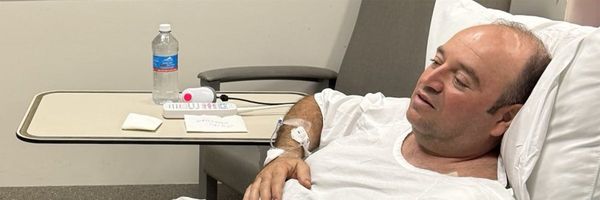
After dismissal on a recent day at Mohawk Primary Center in south suburban Park Forest, Jessica Macias pulls out worksheets and squishy stress balls as she chats with a few third graders about pajama day. Macias likes to connect with the students before jumping into fractions.
“Do you know how to cut a pizza perfectly? I can’t,” she says as she shows the kids a colorful fraction chart. “Mine aren’t always equal, but this tells us where they’re equal.”
Macias is a psychology grad student from nearby Governors State University, and she’s been trained to tutor third graders as part of the Illinois Tutoring Initiative. She helps a small group of Mohawk students in math for one hour, three times a week.
“It is not homework help,” she says, making clear this isn’t your standard after-school tutoring.
It’s called high-impact or high-dosage tutoring, and experts say it’s the best hope for catching students up who fell behind during the pandemic. After students across the country returned to school in 2021 after remote learning, it was clear the pandemic took a toll. Before the pandemic, about 28% of the students in the Park Forest school district met standards in English. After the pandemic, that number was cut by more than half. Math performance suffered even more. The trend was the same statewide.
“We knew that we had a lot of work cut out for us, as far as closing those academic gaps, and meeting the students where they were,” Mohawk Principal Lori Colbert said as Illinois approached March 17, the three-year anniversary of when Illinois’ first closed school buildings because of the pandemic and begin shifting to remote learning.
The Park Forest-Chicago Heights School District 163, which includes Mohawk Elementary, is one of 46 Illinois districts participating in the Illinois Tutoring Initiative run by Illinois State University. The Illinois State Board of Education is using federal COVID-19 relief dollars to fund it, saying about 3,100 students have been matched with more than 875 tutors.
So far, the state says it has spent nearly $300 million of the $749 million in federal dollars it has for state-led initiatives to help schools recover. Many other Illinois districts also offer tutoring but use their own COVID relief dollars. The state got nearly $8 billion in federal relief funds, and each district got a cut of that.
Christy Borders runs the Illinois Tutoring Initiative. Governors State University, along with a few other Illinois colleges, are training and supplying the tutors. Borders says time is limited during the school day to work with students who are behind. With high-impact tutoring, kids in a small group get time to master a skill. After a year of tutoring, she’s seeing signs of improvements, but it’s hard to say how soon a program like this can fully catch kids up.
Mohawk elementary in suburban Park Forest is one of 46 Illinois districts participating in the Illinois Tutoring Initiative run by Illinois State University. Susie An / WBEZ
“The hope is when you build those foundational skills, then they can start moving a little quicker,” she said. “Frankly, some of our students are years behind when it comes to grade level.”
Like at many schools, the tutoring at Mohawk is voluntary and small scale. Staff there encouraged certain students to enroll who they believed would benefit. A new analysis by the Associated Press and Chalkbeat, an education news outlet, found a fraction of students in the country’s largest school districts are taking part in tutoring.
Though many districts have prioritized tutoring in their recovery efforts, the analysis shows that of the 8 of 12 school systems that provided data, less than 10% of students received any type of tutoring from their district. The news organizations reported the tutoring program in Chicago Public Schools has served about 3% of students.
Research shows all tutoring can be beneficial, but high-impact tutoring can be especially effective because of its frequency and the attention given to students in small groups.
The state’s tutoring program focuses on districts where COVID had a disproportionate impact. Some 83% of the students in the Park Forest school district are considered low income. Jeannetta Edwards, tutoring administrator at Governors State, said districts participating in the state’s program can preserve their own COVID-19 relief dollars for other necessities.
“With the shortage of teachers and teachers being burnt out … this gives the district an opportunity to give their teachers a break and the support that they need to be the best teachers they can be,” Edwards said.
The tutoring initiative won’t have full data on student progress until summer, but director Christy Borders says some of the early stats show a noticeable difference between tutored kids and those who opted out of the voluntary program.
“I always say, ‘Yes, we want the test scores to move,’ ” Borders said. “But more than that, we want kids to believe that they can learn and that they can be confident in the classroom because that’s when real learning can occur.”
The state on Wednesday voted to extend high-impact tutoring into next school year, using remaining federal COVID-19 relief money.
Borders says the learning disruption during the pandemic was like water freezing in cracked pavement, deepening the divide. For more students to thrive, she thinks tutoring like this will be needed even after COVID-19 dollars dry up.
Susie An covers education for WBEZ.







